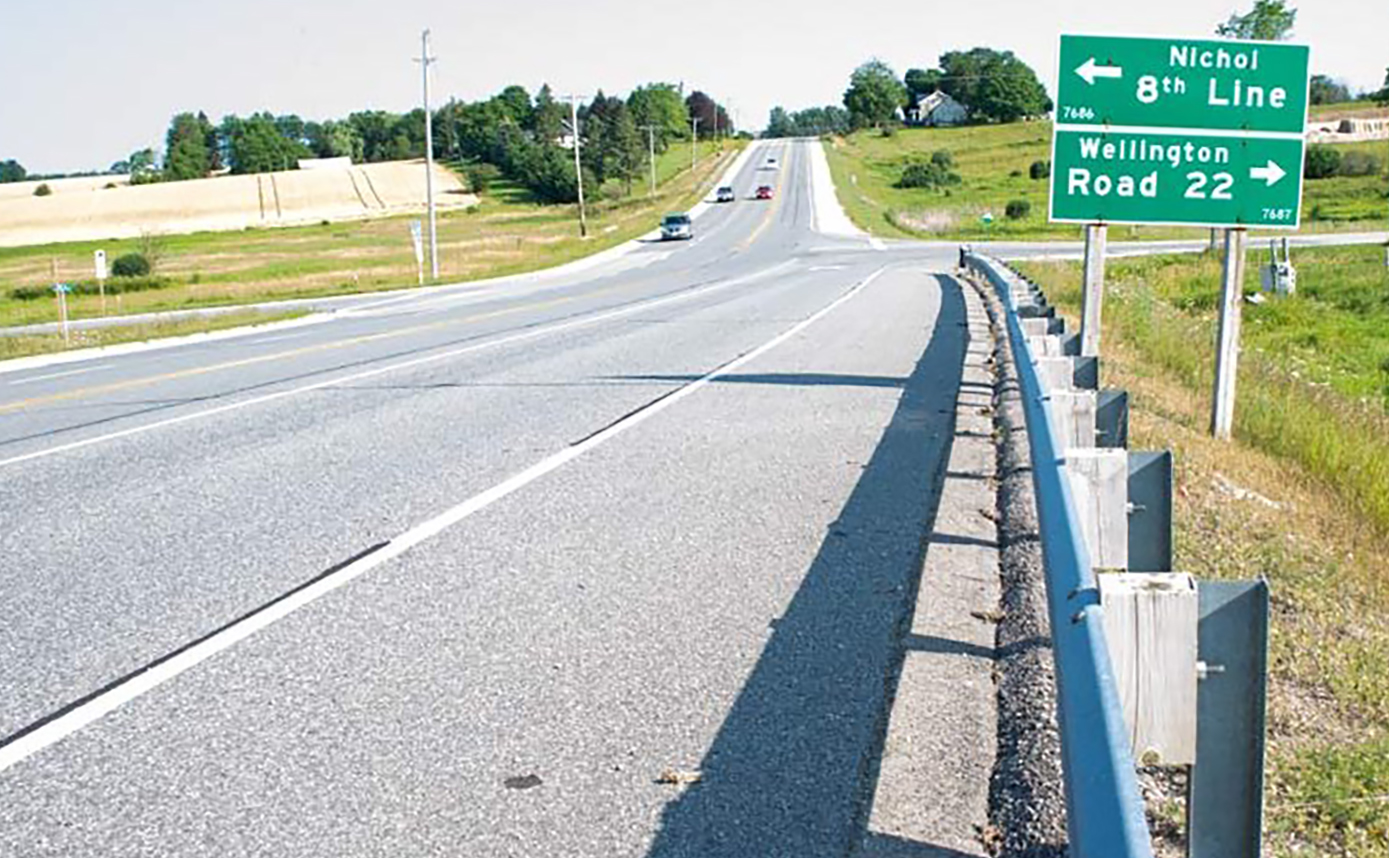WELLINGTON COUNTY – Improvements to the intersection of Highway 6 and Wellington Road 22 are expected in 2023.
The Ministry of Transportation has been monitoring traffic volumes and collisions at the intersection and last July determined “there is a benefit to completing intersection improvements,” Taylor Stewart, assistant to the director of the Ministry of Transportation’s London-based West operations, wrote in response to an Advertiser query.
Stewart said the project is at the design stage and traffic signals and left-hand turn lanes on north- and southbound lanes of Highway 6 are expected.
“It is anticipated that construction of the improvements at this intersection, which will be funded by the province, could begin in 2023, following completion of the design and securing the necessary approvals,” he wrote.
Wellington County OPP officials explained data from January 2016 to June of 2021 shows no fatal accidents in that time period at the intersection, which is on the border of Centre Wellington and Guelph/Eramosa.
However, there have been nine non-fatal injuries and 16 reports of property damage in 25 collisions during that time.
In the past there have been fatalities at this intersection, which has a reputation as a nasty part of the highway, with a bend on northbound Highway 6 just before Wellington Road 22, and the two roads meeting in a valley between two hills.
Fog tends to collect there, the hills get icy in the winter, and the wind causes drifting – all of which make it challenging to cross Highway 6 or make a lefthand turn, from any direction.
Wellington-Halton Hills MP Michael Chong knows a bit about that intersection.
Both of his parents were killed in separate crashes at the treacherous spot.
It was a Thursday in April of 1978 when Chong’s mother, Cordelia, headed to Guelph to pick up napkins for a dinner party the Chongs were hosting the next night.
It was a foggy evening and Cordelia turned left from Wellington Road 22 onto Highway 6 south directly into the path of a transport truck.
There is a right turn lane on northbound Highway 6 and in the fog, Cordelia mistook the oncoming lane for the southbound lane.

WELLINGTON-HALTON HILLS MP MICHAEL CHONG
“She was hit by a truck head-on,” Chong said in an interview. “It was so foggy. My dad told us the next morning.”
Chong, the eldest of four children, was six at the time.
“You grow up quickly when your mother passes and you’re six,” he said.
“I realized we are all mortal – we all pass on. I think it has helped me understand the losses people go through. It’s made me more empathetic.”
In May of 1999, Chong’s father was coming from Guelph, travelling east on Wellington Road 22. He had to cross Highway 6 to continue on to the family farm on the east side of the highway.
“He stopped at Highway 6 but didn’t see a car heading north on Highway 6 and was T-boned in the intersection,” Chong said.
“I was on a canoe trip on the Spanish River and people were trying to reach me for days. I made it back in time for the funeral.”
With the passage of time, Chong has become philosophical about the accidents.
“When you live in rural Ontario, car accidents are not infrequent. People die. In high school there were a number of my classmates who died,” he said.
“Our cars and highways are a lot safer now, so accidents are not as frequent. Fatality and accident rates have done down.”
His own boys are not driving yet, but his oldest just turned 16, so that day is not far off.
“It crosses your mind,” he said, when asked if he’ll worry about them when they finally get behind the wheel.
“When you see your loved one leaving, it crosses your mind they might not come back home.”
Chong added, “I trust the professionals at the Ministry of Transportation. They do a good job and I defer to their expertise.
“But I’m always careful at that intersection.”




